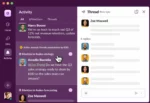Bragging about the Gphone
If you read our blog, you already know that I’ve been bragging all month over my big scoop – from 2007. You see, in October of that year, I wrote an article for SD Times that detailed Google’s plans to build and sell its own phone based on the Android platform. As a reporter, scooping a story almost three years ahead of time is something of a holy grail, so I’ve been pleased as punch to brag about my elite reporting skills. Of course, now that the Nexus One is here, I have nothing more to brag about. It’s on to the next story. But perhaps Google will release its netbook in the coming weeks, and I will again be able to take credit for another scoop. If you read my original article, you may notice that my source claimed the Nexus One could be based on the x86 platform. That obviously turned out to be wrong. But I remain confident that my source had simply seen the specifications for Google’s forthcoming netbook and got confused. So remember, when Google releases a netbook later this year, you read it here first! —Alex Handy
Apple better look out now
Google’s Nexus One and the Palm Pre are compelling alternatives to the iPhone. I’ve argued that Apple needs to bring back the “wow” with the iPhone 4G, and I stand by my analysis. Apple has created a great user experience with the right combination of software and hardware, but its competitors are catching up and have introduced some unique innovations of their own. Apple still has a lot of room to play in a very competitive—and growing—market, but it takes going the extra mile to stay on top. Android has evolved rapidly and is growing in market share. It is very possible that Android-based smart phones will surpass the iPhone’s popularity—and soon. — David Worthington
Twittering temblors
The United States Geological Survey has found a way to mine Twitter for real-time data on earthquakes. Realizing that people tweet about earth-shattering events as they happen, the USGS created the Twitter Earthquake Detection project, which tracks Twitter for the appearance of the words “earthquake” or “tremor.” It then maps out the sources of those tweets. In time, it can create a map showing areas affected by the quake and even an estimate of its intensity. The project is still growing as the USGS is trying to find ways to make collecting data from tweets more accurate and useful, but it’s good to see that people are discovering ways to make use of a generally frivolous service. — Adam LoBelia
Don’t forget the user
We’ve been hearing a lot from “legacy modernization” vendors who claim companies want to migrate off their mainframes to cut costs as their data increases exponentially. We also hear a lot from mainframe sellers that companies are revisiting their mainframes as a way to cut the costs of upgrading and maintaining their burgeoning data centers. Either way, one thing is certain: You’d better get the people using those applications to sign off on any changes before doing them. Employees working with green-screen applications understand them and are adroit at inputting data in to their fields; moving them into an application with a different interface could require extensive training. The same is true for taking someone off a comfortable modern GUI into the green screen. As a famous ex-president would have said if it were applicable in any way to his life: “It’s the end user, stupid!” — David Rubinstein





